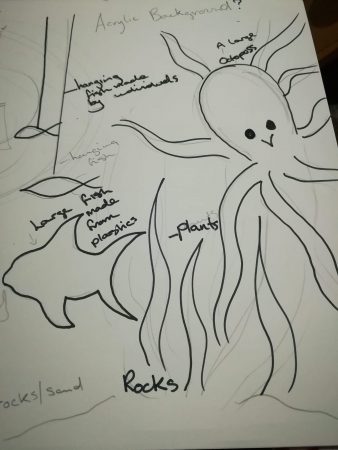The Women’s institute has a long history of campaigning on hot topics such as women’s health, environmental issues and social awareness. As a WI group, many of the Cambridge Ladybird members are involved with craft on both personal and activist levels, craftivism is a well-documented method of bringing large issues to the wider community. At the end of this exhibition, we aim to recycle a minimum of 80% with the potential for 100% of all the materials used within this installation. We want to show how the plastic we humans use potentially re-enters our food chain via the fishing industry. We hope this will highlight and make our audience more aware of the environmental impact synthetic fibres have upon not only us as humans but also the world as a whole.
Description of the Cambridge Ladybird’s artwork appearing in CirculART
Plastic based marine life linked to the issue of plastic in the ocean; giant plastic octopus, fish, plants/coral and a tide wave of synthetic clothing.
What repurposed materials have the Cambridge Ladybirds used
The majority of the installation is plastic based, made from plastic food packaging and netting. It is supported by fabric and plastic structures , some metals and old wire/coat hangers.
Why the Cambridge Ladybirds choose to use repurposed materials
As members of the Cambridge Ladybirds WI group we are working with last year’s WI national resolutions. We are hoping to highlight this micro-plastic issue.




